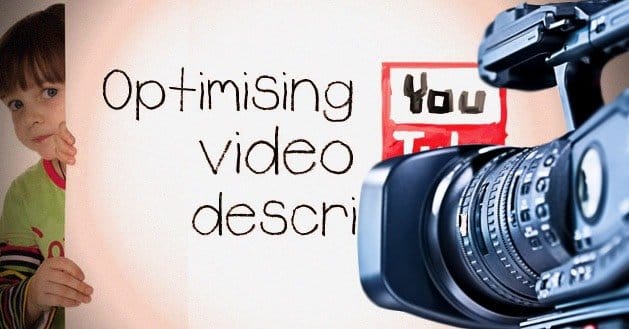 Written by ContentPowered.com
Written by ContentPowered.comYouTube focuses on video, which can’t really be indexed by the search engines. There are a few avenues of optimization, but one of the best is the description. First, though, a brief overview of other means of optimization.
Title
The title of the video is quick and simple to optimize. Treat it like you would treat a blog post headline or the meta title of a webpage. Include a keyword, make it legible and human readable. The title is what shows up everywhere; on top of the video, in search results, in embeds and everywhere else. Keep it short, under 65 characters whenever possible. If you must brand it, put your brand name at the end. Remember, you can edit the video title later if your current title is proving ineffective.
Tags
Tags are single words or words in quotes. Plug as many as you can into your video, including any relevant keywords. Don’t worry about over-doing it. Just make sure you’re not putting in tags that aren’t relevant; it can earn you a spam flag. Do not put a list of keywords or tags in your description.
Transcripts
If your video has spoken words in it, consider uploading a transcript. For some simple videos, YouTube’s auto-captioning will work, though it may be off. For any video starring a speaker with an accept, or any video with technical words or jargon, don’t trust the automatic caption system. Uploading a transcript also helps the content of your video receive a place in the index; Google and YouTube use the transcript to pull additional keywords and phrases for indexing. It doesn’t always work, but it can’t hurt if you have a script on hand.
Playlist
Any time you can, create a playlist that contains videos of similar subject and content. It’s a great idea to create ongoing series’ of videos centered around a theme. In these cases, creating playlists of all of the videos in order helps viewers move from one video to the next. It’s less of an SEO factor and more of an engagement aid.
Channel Page
A channel page is like a home away from home, and you can brand it as such. Include a brand link and social icons. Change the background color to match your branding. Fill out profile information and keywords. Feature compelling videos and playlists.
Video Endcap
In the last five or ten seconds of your video, once the content is over, create a call to action endcap to the video. This should be a branded page with an annotation link to your subscription page or your website, complete with call to action. It should also include previews and clips of other videos, with hints to the content to get users to click through. It doesn’t have to be complex, and it can augment your playlist.
Video File
This one is simple; give your video file an optimized name before you upload it. Video_10_Best_Fashion_Fails.mpg is a better file name than Project1993919302.mpg.
Video Thumbnail
By default, YouTube will sample three or four locations in the content of your video and offer you the choice of screenshots. Additionally, most YouTube users can upload a customized screenshot, which allows you to create branded title cards that make your videos stand out. If you don’t have the ability to upload a thumbnail, you may have a flag on your account; talk to YouTube about getting it removed.
Description
Alright, finally to the description. The basic formatting is simple. Lead with a link, follow with a textual description and end with a call to action and repeated link.
To expand on each of those points, start with the first link. It’s a good idea to lead off with a short sentence and a call to action link. “Visit our website at www.example.com” is perfectly acceptable. You can replace it with a link to your subscription page, your blog, your Facebook page or whatever else. Typically, many content creators follow up this sentence with a bank of links for website, social profiles, stores and other important links. Most, if not all, of these links are hidden beneath the “read more” cut.
Now for the actual textual description. There are very few rules for what you should put in this section. You can, however, follow some basic guidelines.
- Do not post a video transcript here. The only exception to this is if you’re a musician and want to post the accurate lyrics for your song.
- Do not fill this section with a list of keywords; that’s what the tags section is for.
- Optimize your description for SEO in the same way you would optimize a blog post. Primarily, this means at least one usage of an exact match long-tail keyword you’re targeting.
- You can keep your description short, or you can make it long. Just be aware that the longer it is, the less people will read to the end. Typically you should never need to write more than two or three paragraphs.
As for the precise content, you can treat it like a short companion piece or teaser for the video. Don’t spoil the value of the video, or else people won’t watch it.
Now, the final link. It’s always a good idea to close on a call to action, generally to subscribe or to click through to your website. Even if this link is a repeat from the first bank of links, you can still get away with it.
If you want, you can swap the location of the bank of links. Keep at least one call to action link – typically the most important – in the first sentence. Move the bank of social links and website links to the bottom of the description. You can test this in your videos to see which layout works best.


